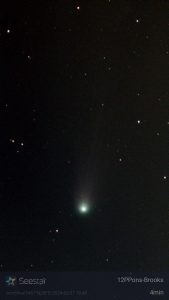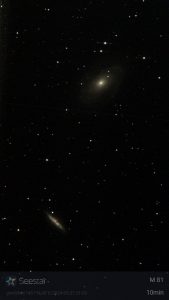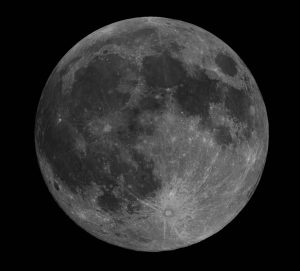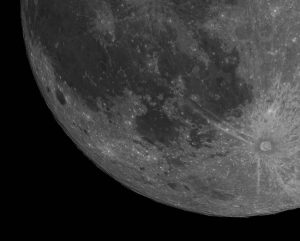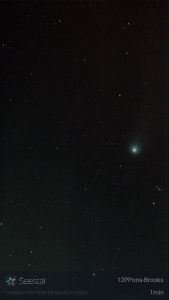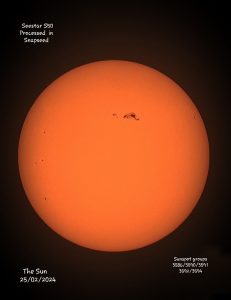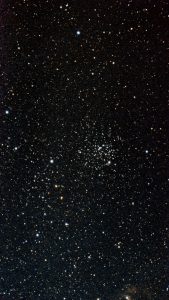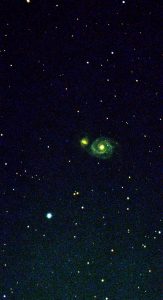A super image of Bode's Galaxy & the Cigar Galaxy in the constellation Ursa Major taken by member Jim Burchell on Wednesday 27th March 2024. Jim captured the image using a Seestar S50 smart telescope and stacking 60 x 10 second images.
Bode's Galaxy is towards the top of the image and the Cigar Galaxy is towards the bottom of Jim's image.
Bode’s Galaxy also known as Messier 81 (M81) is a grand design spiral galaxy which lies approximately 11.8 million light-years from Earth, with an apparent magnitude of 6.9.
The Cigar Galaxy which is also known as Messier 82 (M82) lies close to M81, and is often photographed together with Bode's Galaxy as Jim has done. M82 is called the 'Cigar Galaxy' because of the elongated elliptical shape produced by the tilt of its starry disk relative to our line of sight.
The Cigar Galaxy is a starburst galaxy approximately 12 million light-years away from Earth with an apparent magnitude of 8.4. The starburst activity is thought to have been triggered by interaction with the neighbouring Bode's Galaxy.
Both galaxies can be found about 10 degrees northwest of the star Dubhe in Ursa Major.
